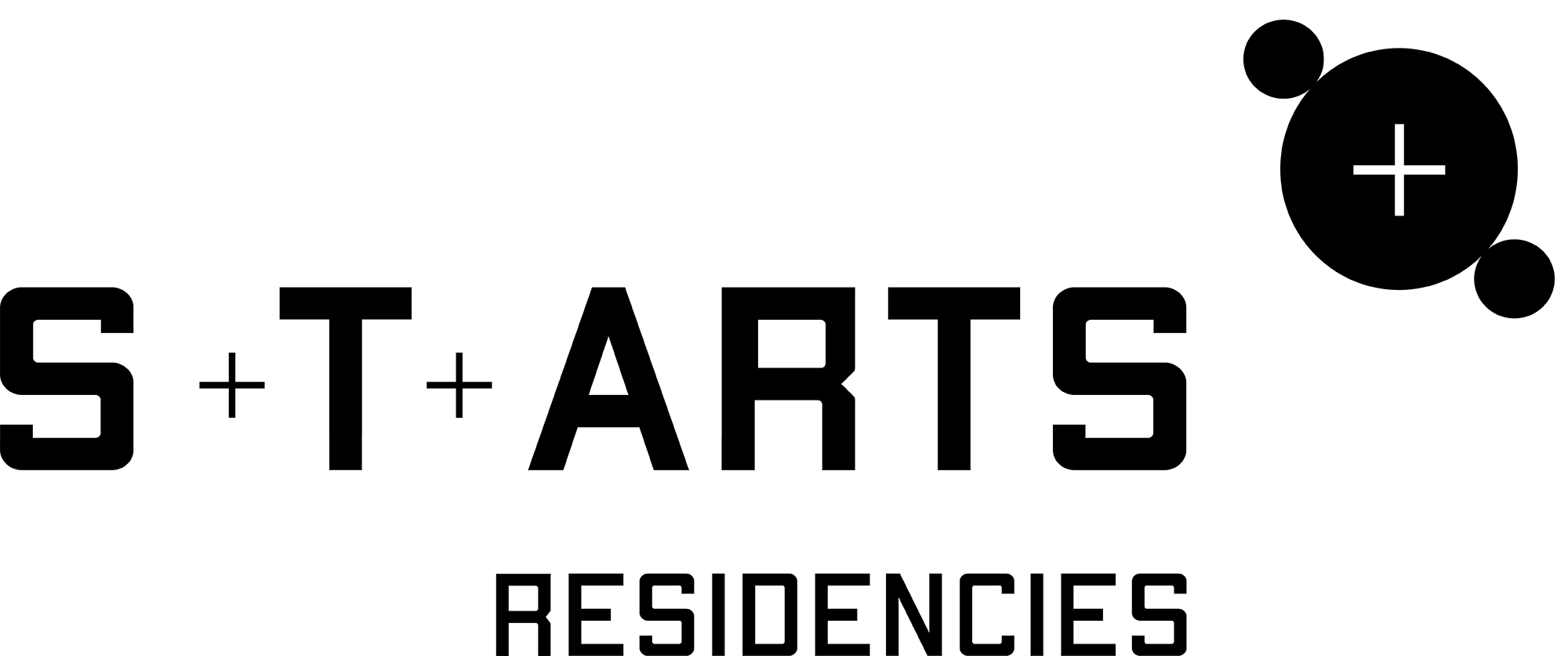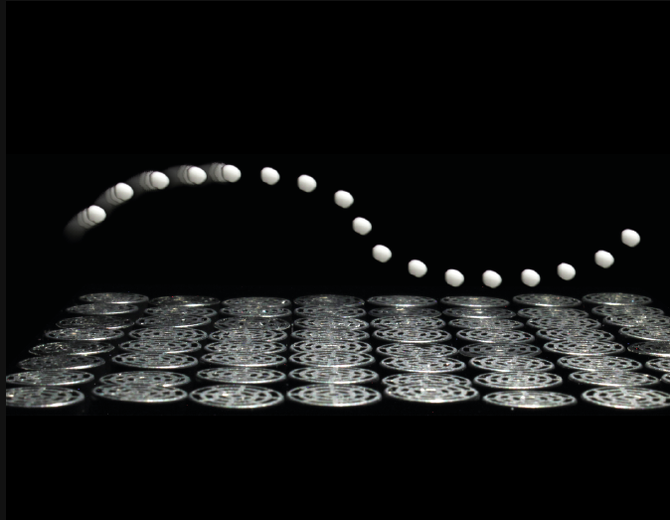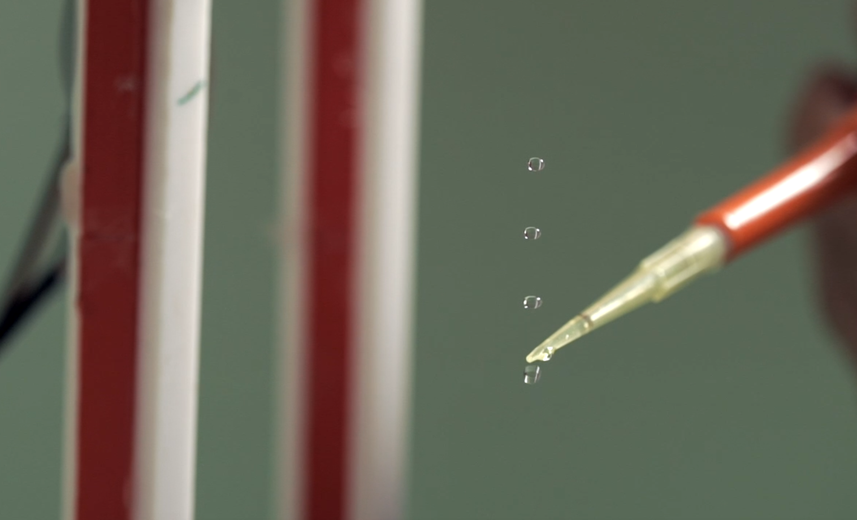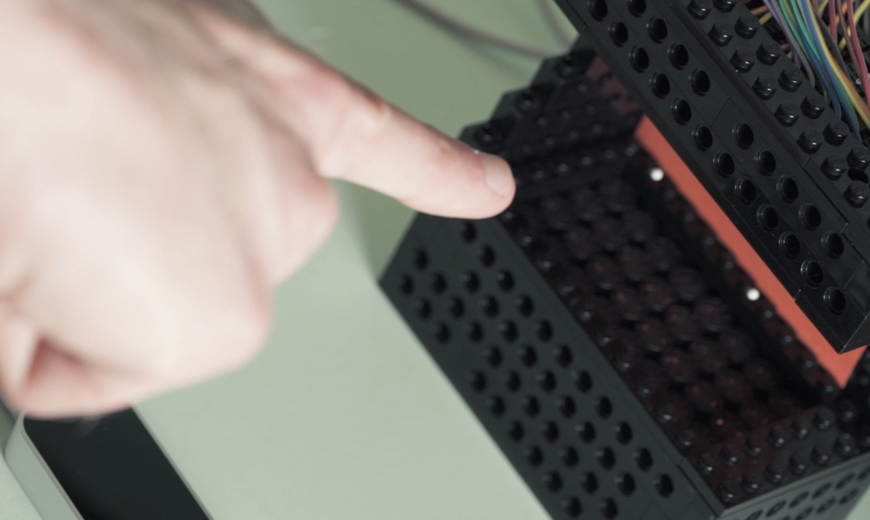Tech Project
Description of the challenges faced by the Tech Project
The Levitate team manipulates ultrasonic wavefronts to create levitated objects that can be seen, heard and felt. As we move away from traditional human-computer interaction techniques like keyboards and mice towards touch (e.g., Smartphones ) and touchless interfaces (e.g., Kinect) our interactions lose physicality. Both touch and touchless interactions lack a controller or interface element that provides meaningful physical feedback. The same holds for voice control interfaces. Therefore, the team proposes a radically different system that can bring the physical interface to the user in mid-air. In their vision, the computer can control the existence, form, and appearance of complex levitating objects composed of "levitating particles". Users of this interactive display will be able to reach into the levitating matter, feel it, manipulate it, and hear how they deform it with all feedback originating from the levitating object's position in mid-air, as it would with objects in real life.
Brief description of technology
A good handful of prototypes of different sizes that range from small devices with effective dimensions of a few centimeters and that can levitate only a few beads to devices with a base size of 25 cm x 25 cm that enable more complex scenarios are available. It is possible to install a projector to project visual textures onto the beads. Most prototypes are equipped with a Leap Motion finger tracking system to enable interactivity. Haptic feedback requires a sound field that can interfere with the levitation so that a certain spatial distance to levitating objects needs to be maintained. LEVITATE bases on the acoustic phenomenon of radiation pressure, which describes that fact that objects exposed to a sound field can experience a force. We use arrays of small ultrasonic transducers to produce a force that cancels gravity to levitate particles like polystyrene beads. The different arrays that we have been using comprise between 32 and 256 transducers, and the size of the illuminated volume is in the order of 25 cm x 25 cm x 50 cm. A good handful of beads of a diameter of 1-2 mm can be levitated and controlled independently. The precise limit depends on the specific case. The arrays are controlled through custom created software APIs. Most effects can be produced through a graphical interface. Advanced effects require programming skills either in C/C++ or in Python, but this is not a necessary skill.
What the project is looking to gain from the collaboration and what kind of artist would be suitable
We would like to commission an artist to create a small number of interactive installations for stimulation of both the project team as well as the public. The artist will bring qualitatively different insights to the research process about how people engage visually with sculptural forms. The artwork could showcase the capabilities of different parts of the project research cycle or explore ways in which it can be impactful. To inspire our team, the artwork could be purely artistically motivated or scientifically motivated, but most interesting would be a bit of both. The process includes ideation, proof-of-concept installation and documentation through videos/ web portfolios. As taking beads in and out of the sound field does not occur without hiccups, animation of a fixed set of levitating beads could be a starting point for a project. As animation of movements is likely to play an important role in the work, we seek for a person with according experience. The technology created in Levitate is new and developing fast. We therefore strongly recommend interested artists to contact jens.ahrens@chalmers.se to discuss the feasibility of project ideas.
Resources available to the artist
The artist will be provided with a workspace incl. a desk, internet connection, etc. at University of Glasgow, UK. The work can only partly be performed remotely as the hardware is difficult to transport and is occasionally used by other project members on-site. The artist will be embedded in a team of a handful of people who all work on the LEVITATE project both on the technology as well as on HCI aspects and who can advise the artist.




